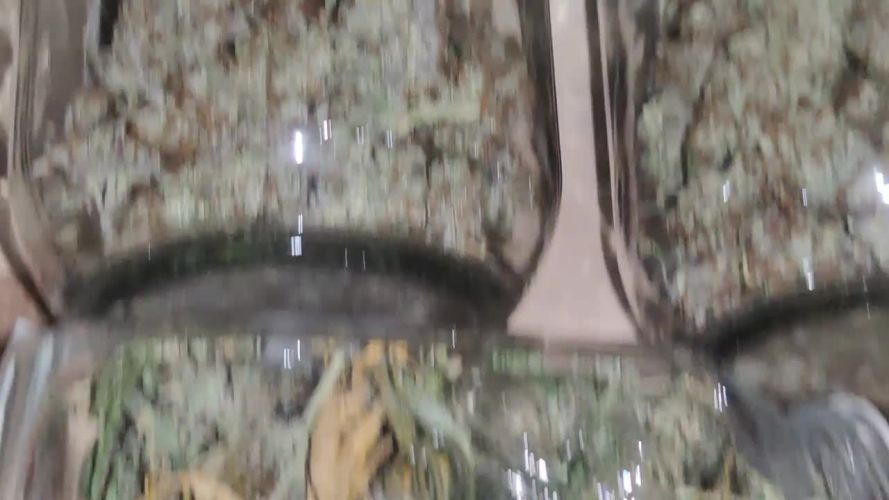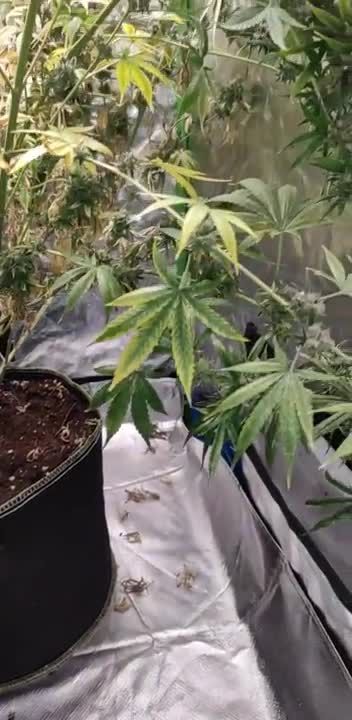How is Durban Poison Fast Flowering from PEV Seeds?
It shows great vitality from the moment it breaks the seed, you can see the influence of pure sativa that runs through its sap. The growth phase will be shortened thanks to its vigor, since reaches sexual maturity much earlier than the vast majority of sativas on the planet, even before many hybrids.
During flowering it stretches the structure to triple its size, and in a short time it covers the pistil branches, which are longer than average. As soon as it stops growing, it focuses on fattening the flowers, forming very fleshy buds of medium hardness, with good thickness and totally sticky.
What is the genetics of this fast flowering sativa?
It could be said that it is a retro-cross between Durban Poison and Auto Durban Poison, because it is the first generation of the crossing of both, after creating the autoflowering version of this plant. This technique is used to shorten the flowering time of photodependent strains, crossing a genetics with its automatic version, to maintain the original genes of the variety in seeds with a much faster cycle.
How is Durban Poison grown Fast Flowering?
It is one of the few sativas that you can grow both indoors and in most places in outdoor cultivation. Indoors it is enough to put 9 plants / m2 in pots of 11 liters, with pruning so that they do not rise in height, and give about 3 weeks or 25 days of vegetative growth. When changing the photoperiod it is interesting to clean the lower areas of the plants, since the light does not reach well there. It is interesting to apply the method SCROG , or to supercropping, to maintain the desired height and homogenize the canopy.
In outdoor or greenhouse cultivation you have several ways to succeed with this variety. The ideal is to make a good hole in the ground, of 50 to 100 liters approximately of capacity, in a very sunny place, and fill it with specific soil for cannabis. If you want a tree to be made, germinate the seeds in early spring and plant them there, you will see the frantic rate of development that this genetics reaches. To take better advantage of the light, it is interesting to do apical pruning and then several prunings to the secondary branches.
The Grow Awards 2026 🏆 





















Durban Poison Fast Flowering
Follow
#8423
Global pos.
0
1 harvests
#8423
Global pos.
0
1 harvests
300
g/plant
1
Diaries
fem
P
photo
Show more
Popular Diaries Show All Diaries
Shorts Show all
Latest Reviews Show All Reviews
Pretty hard to grow (pure sativa landrace) but very good genetics, buds are purpling leaves too , flushing was perfect (3/4 more day to finish) smell very good and strong (15% amber for 85% white cloudy trichomes for 75% dark orange pistills and 25% light yellow) cuted at day 11 after breeder indications .
Effect : it "stimulate" all your body and your spirit and it's a very long lasting effect , THC is quite high (14-15%) very very good strain for the beginning of a good journey
you will feel your spirit but be careful with it
it's stimulate your mental and your spirit hard , take your time before retaking it , personally my body say no it's too strong for you definitely not a strain for me but another smoker who tested my Durban loved it they say wow dude you're so good 😏
Show more
3y ago
Similar Strains

8.6/10
Amnesia Lemon Feminized
26 diaries
15 harvests

8.7/10
Blueberry Auto
18 diaries
13 harvests

8.8/10
Mamba Negra Autoflowering
15 diaries
13 harvests

9.1/10
Dosidos x Purple Punch Feminized
17 diaries
12 harvests

9.2/10
Jamaican Lambsbread Feminized
10 diaries
9 harvests

8.8/10
Miracle Alien Cookies (MAC) Feminized
20 diaries
8 harvests

9/10
Blueberry Feminized
15 diaries
8 harvests

7.9/10
Moby Dick Auto
14 diaries
8 harvests

6.9/10
Tropicana Cookies Autoflowering
10 diaries
7 harvests

7.6/10
Critical Plus Autoflowering
9 diaries
6 harvests

9.2/10
Fucking Incredible Feminized
8 diaries
6 harvests

9.8/10
Amnesia Lemon Auto
10 diaries
5 harvests

Purple Kush Feminized
6 diaries
5 harvests

Runtz Feminized
8 diaries
4 harvests

Limoncello Feminized
5 diaries
4 harvests

Northern Light Auto
4 diaries
4 harvests

8.5/10
Alaskan Thunder Fuck Feminized
9 diaries
4 harvests

Bruce Banner
6 diaries
4 harvests

Banana OG Feminized
4 diaries
3 harvests

Wedding Cake Feminized
6 diaries
3 harvests









